You are here
How to use Acupressure to Improve Blood Flow to Your Legs and Feet
 Have you noticed that your fingernails grow more quickly than your toenails? If not, the next time you clip your fingernails and toenails on the same day, take note of how quickly they grow. I'm confident that you'll find that your fingernails need another trim at least a few days before your toenails do.
Have you noticed that your fingernails grow more quickly than your toenails? If not, the next time you clip your fingernails and toenails on the same day, take note of how quickly they grow. I'm confident that you'll find that your fingernails need another trim at least a few days before your toenails do.
Are you curious about why your fingernails grow faster than your toenails? The answer is simple:
Your upper extremities are closer to the pumping power of your heart than your lower extremities are, so your arms and hands enjoy better overall blood circulation than your legs and feet do.
This tidbit on human anatomy and physiology illustrates how important your blood circulation is to the health of all of your cells. Better circulation almost always translates to quicker growth and repair of damaged cells. This is only logical of course, since the health of all of your cells is dependent on receiving a steady supply of oxygen and nutrients, as well as on having carbon dioxide and other waste products removed on a continual basis; your blood circulation is responsible for fulfilling both of these roles.
Since your lower extremities generally do not enjoy the same level of blood perfusion that the rest of your body does, it stands to reason that your thighs, legs, and feet can use all of the extra help that you can provide through your food and lifestyle choices to promote strong and steady blood circulation.
Why should you be concerned with promoting healthy blood circulation throughout your lower extremities? Because solid blood flow to your thighs, legs, and feet can help accomplish all of the following:
-
Prevent restless leg syndrome, which involves experiencing unpleasant sensations like itchiness and burning in your legs, which can create an uncontrollable urge to thrash your legs around while you're resting.
-
Promote quick healing of wounds and injuries, from cuts to sprained ankles and fractured bones.
-
Promote healthy bones and muscles throughout your lower extremities.
-
Promote efficient temperature regulation throughout your lower extremities i.e. prevent cold feet.
One of the best therapies that you can use to promote optimal blood flow throughout your legs and feet is acupressure, which involves applying deep and steady pressure to specific locations.
The key to using acupressure to promote healthy blood circulation in your lower extremities is to know the locations of the major arteries that supply fresh blood, oxygen, and nutrients to your pelvic, thigh, leg, and foot regions.
Anatomy of Arterial Supply and Key Acupressure Points in Your Lower Extremities
From your heart, blood pumps down toward your lower extremities via your aorta, which becomes your abdominal aorta, which turns into your common iliac arteries (near the top of your pelvic region), which give rise to your external iliac arteries (near the middle portion of your pelvic region), which give rise to your femoral arteries. Your femoral arteries are named for the femur bone, which is the large bone that begins at the bottom of your pelvis and ends at your knee joint.
Your femoral arteries (one in each leg) give rise to all of the arteries that supply fresh blood to every region of your lower extremities. So the best acupressure point to begin with is Spleen-12 (one on each side of your body). Application of pressure to Spleen-12 can help to promote optimal blood flow through your femoral arteries.
Spleen-12 (SP-12)
SP-12 is in your pelvic region in the center of the crease where your thigh joins your trunk. Pictures of SP-12 can be found on pages 127 and 129 of Acupressure's Potent Points
***
In the soft, fleshy area found behind each of your knees, your femoral artery becomes your popliteal artery. Healthy blood flow through your popliteal artery can be promoted by applying pressure to a point called Bladder 40.
Bladder-40 (BL-40)
BL-40 is in the center of the soft, fleshy area at the back of your knee, right in the crease of your knee joint. In Acupressure's Potent Points, this point is shown as BL-54 on pages 148 and 149. Some practitioners refer to this point as BL-40, while others refer to it as BL-54.
One way of ensuring that you locate BL-40 is to start by applying pressure along the middle portion of your calf muscle and then run straight up to the back of your popliteal fossa.
***
From the back of your knee joint, your popliteal artery gives rise to your anterior tibial artery, which travels down the front part of your leg in the muscles associated with your shins (when these muscles are inflamed, this condition is referred to as shin splints). Healthy blood flow through your anterior tibial artery can be promoted by applying pressure to a point called Stomach-36.
Stomach-36 (ST-36)
ST-36 is located approximately four finger widths below the bottom border of your kneecap, one finger width outside of your shin bone (tibia). You can confirm that you are on the right spot by placing your fingers on this area and feeling for muscle contraction while you move your ankle joint up and down. Pictures of ST-36 can be found on pages 127 and 128 of Acupressure's Potent Points
***
Also from the back of your knee joint, your popliteal artery gives rise to your posterior tibial artery, which travels down the back of your leg and supplies fresh blood to most of the tissues in the posterior compartment of your leg and ultimately the bottom of your foot. Healthy blood flow through your posterior tibial artery can be promoted by applying pressure to a point called Spleen-6.
Spleen-6 (SP-6)
SP-6 is located approximately three finger widths above your inner ankle bone, in a tender-to-applied-pressure region of your lower calf muscle, just behind your main shin bone (tibia). Pictures of SP-6 can be found on pages 169 and 171 of Acupressure's Potent Points
***
In your ankle region, your anterior and posterior tibial arteries come together to form a network of smaller arteries that supply fresh blood, oxygen, and nutrients to your feet. The best acupressure point to stimulate to promote healthy blood flow through this network of arteries is Liver-3.
Liver-3 (LR-3)
LR-3 is located in the soft, fleshy area that is between your big and second toes - run your finger up this region toward your ankle until just before you can't go another further because you have run into bones (your first and second metatarsals). A picture of LR-3 can be found on page 107 of Acupressure's Potent Points
If you decide to use the acupressure points listed above to promote healthy blood circulation throughout your lower extremities, please be sure to first receive permission from your primary health care provider, as there are some health conditions that contraindicate the use of acupressure in certain areas of your body.
If you'd like an excellent reference book that offers guidance on using trigger point therapy for a wide variety of health challenges, including those related to poor blood circulation in the legs, I recommend that you have a look at:
The Trigger Point Therapy Workbook: Your Self-Treatment Guide for Pain Relief, Second Edition
Beyond the use of acupressure and trigger point therapy, you can promote healthy blood circulation in your legs and feet by following the food and lifestyle suggestions found in the following articles:
How to Prevent Diabetes Mellitus Type 2
Two professional grade supplements that may also be of assistance in promoting healthy blood circulation through your lower extremities are:
Join more than 80,000 readers worldwide who receive Dr. Ben Kim's free newsletter
Receive simple suggestions to measurably improve your health and mobility, plus alerts on specials and giveaways at our catalogue
Please Rate This
Highest Rated | Related Posts | ||







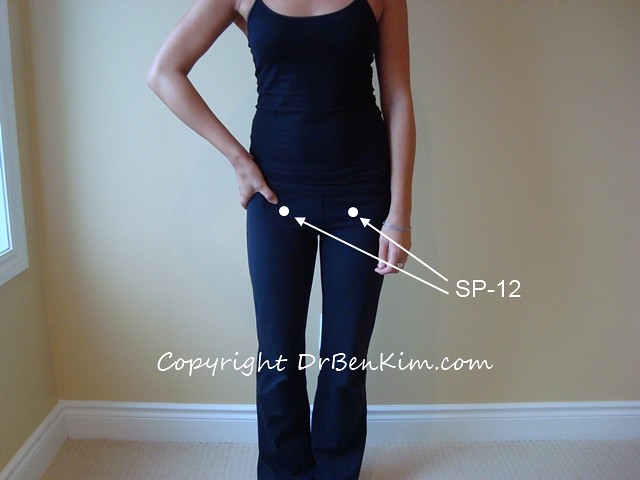
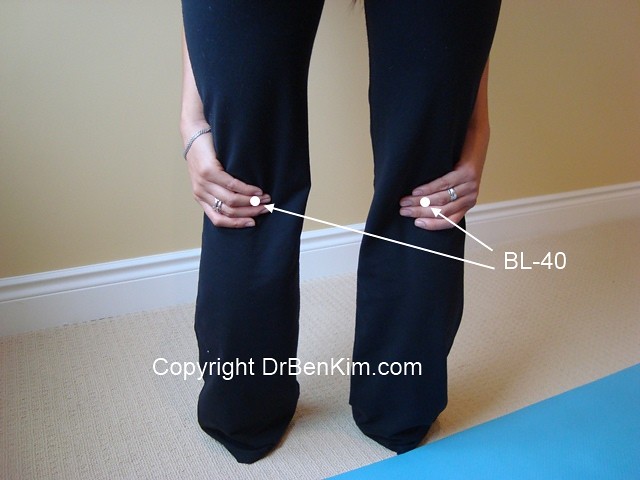
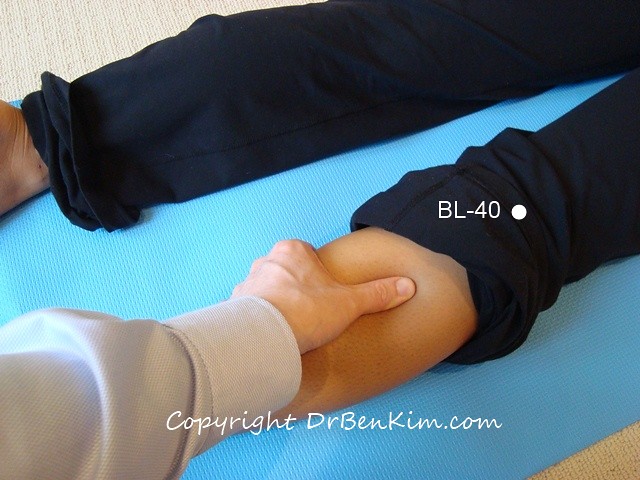
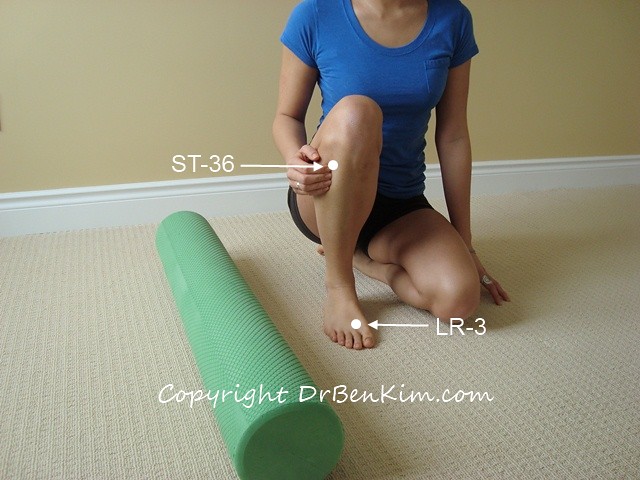
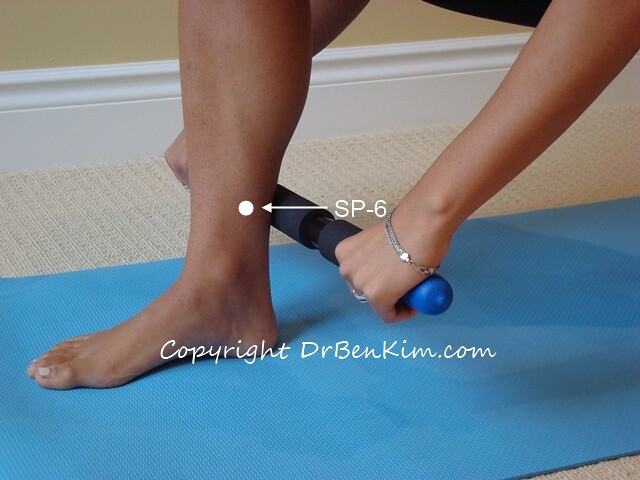




Comments
Circulation in the lower limbs.
As always Dr Ben,I found this to be a very helpfull and interesting view of the essentials of effective circulation of the extremities,very usefull for us older versions (70 years). I personaly have attempted to keep this aspect functional using exersizes fairly regularily through my life (squats, calf raises, touch-toes etc) but I am keen to adopt your ideas also.
I had hoped that you were going to cover the subject of night-cramps within the post. I suffer to a modest degree from this curious complaint.(Best cure to date is to war-dance around the bed at 2am!)
All opinions on the causes are very vague in western medicine, the very mechanism is not understood and I hoped that your background would have a refreshingly different take on the subject.
I feel that it is associated with low circulation rates in older people, (lower still when asleep) but it appears to be a neurological reaction to an unacceptable temporary physical condition.
This is my own guess, I have never seen it suggested by any profesional. I would love to hear your opinions and thoughts on the matter.
I archive all your emails to refer to, as I believe they are timeless knowledge presented with great care. Thanks for a great site.
circulation in the lower limb
Hi Pippa
I refer to your nigt cramps. I do suffer on & off from leg, feet & toe cramps. For the leg part i would just straighten my legs upwards for awhile lying down until the cramps disappear. When it happens to my feet or toes I would get up from bed rub some hot oitment like tiger balm, vicks or metholatum & then walk about a little bit & sure enough the cramps would go off.
Sometimes I would take a pinch of sea salt mixing it with water & drink it. It helps too.
I pray that your leg cramps are in control now.
foot cramps be gone
Hi Pippa
I suffered from them for a long time before I found out about white vinegar. It is so simple. Keep a spray bottle filled with the vinegar by your bed and when the cramps start, just spray the vinegar on the area affected. It should take away the cramp in seconds or a couple of minutes. When the vinegar dries, the smell is pretty much gone.
I know it sounds weird, but i t works well!
Leg cramps
Muscle cramps are related to a magnesium deficiency. Most of the world is magnesium deficient and extra calcium does not help if you are magnesium deficient. Rubbed on magnesium oil helps leg cramps or you can take magnesium supplements. Too much magnesium is a laxative. 4843
Leg Asleep lack of blood circulation
I am 67 and I have periodically meditated for relaxation for several years for 30-45 minutes at a time; however, I noticed lately that my legs fall asleep, it seems I am experiencing a lack of blood circulation at lower extremities. I sit in the floor and place pillow-pad but since I am becoming aware of this I cannot meditate very well any more worried legs will go to sleep. Maybe I have a blood vessel pinch at the bottom stopping the blood circulation. Any suggestions how to improve fix situation. Sometimes if I am unaware I have fallen down after I stand up because I lose full feeling of the legs.
Hello - I would suggest
Hello - I would suggest trying some of the mobility exercises found at our YouTube library, which may improve your blood circulation and nerve tone through better overall tissue health and muscle length:
https://www.youtube.com/user/drbenkim/videos
If you find that mobility work isn't helpful, I would suggest being evaluated by a physician, as you want to be sure that there aren't any issues developing with your blood vessels or nerves.
I hope you experience improvement in the days ahead.
blood circulation in thies legs and feet
Very nice article. very useful. very good narration.Thak you